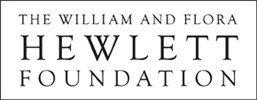Document Content
Daily Log
Tuesday, June 30, 2015
AM
Work began with a pick pass of the trench, beginning in the northern part of the trench and moving south. After picking the northernmost meters of the trench, we also began to level the trench floor by scraping it with trowels, trimming the baulk walls, and defining roots and stumps, in preparation for their removal. Soil is relatively dark brown and loose, with many small rocks, but very little tile and pottery; no bone has yet been found. Soil is hand-sorted directly in the trench into buckets. The few materials we have recovered include ancient and modern tiles, indicating that we are not in a stratified deposit yet.
As we were leveling the trench floor and using trowels to excavate out and around roots and stumps, the soil began to appear more claylike, at least in the northern part of the trench. The new, claylike soil appears to contain fewer stones than the topsoil of Locus 1 . However, in the NE corner of the trench there is a noticeable concentration of larger stones. These underlie a large stump and so their orientation isn't entirely clear, but they
appear to form a right angle and may be aligned with the linear rock feature found in T-57 in 2014. If these stones are part of the same feature as that in T-57, then the projected orientation of the potential building, with a projected N-S running wall connecting the linear rock feature in T-57 with that in T-59 and 69, is incorrect; if there is a corner in this trench, then the stones in T-57 are part of a feature that extends north.
PM
The afternoon began by removing the three larger stumps in the western half of the trench, using an ax and pickaxe. Once these three stumps were removed, we cleaned up loose soil using trowels. While cleaning up loose soil, we found a piece of medieval pottery (Find #1).
After removing the tree stumps in the western half of the trench, we removed the stump in the NE corner that appeared to overlie larger rocks. The stump was removed with an ax and pickaxe. After we removed the stump, the larger rocks did appear to be delineated in a right angle. We then defined rocks to determine if they are delineated. While defining rocks, soil became yellower and more claylike, signaling a soil change. Closing elevations for the day were taken.
Closing elevations:
\xb7 NW corner: 27.20m A.E.
\xb7 NE corner: 27.16m A.E.
\xb7 SE corner: 26.99m A.E.
\xb7 SW corner: 27.01m A.E.
Special Finds
\xb7 Find #1
\xb7 Locus 1
\xb7 86.17E/34.74S
\xb7 27.13m A.E.
\xb7 Medieval pottery
\xb7
Locus 1 :
\xb7 Tile: 1/5 bowl
\xb7 Pottery: 4 sherds
\xb7 Bone: 0 fragments
| Descriptive Attribute | Value(s) |
|---|---|
| Document Type | Trench Book Entry |
| Trench Book Entry Date | 2015-06-30 |
| Entry Year | 2015 |
| Start Page | 29 |
| End Page | 36 |
| Title | Daily Log |
| Descriptive Attribute | Value(s) |
|---|---|
|
Is Part Of
Vocabulary: DCMI Metadata Terms (Dublin Core Terms) |
KRK VIII
Vocabulary: Murlo |
Suggested Citation
Katharine R. Kreindler. (2017) "KRK VIII (2015-06-30):29-36; Daily Log from Europe/Italy/Poggio Civitate/Tesoro/Tesoro 71/2015, ID:688/Locus 1". In Murlo. Anthony Tuck (Ed). Released: 2017-10-04. Open Context. <https://opencontext.org/documents/03d656f5-ff7d-4aab-af30-8eb7b77cc312> ARK (Archive): https://n2t.net/ark:/28722/k2cn7db6k
Copyright License
To the extent to which copyright applies, this content
carries the above license. Follow the link to understand specific permissions
and requirements.
Required Attribution: Citation and reference of URIs (hyperlinks)




